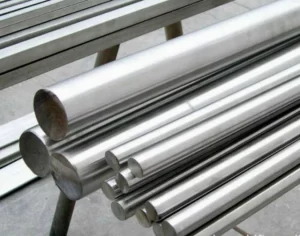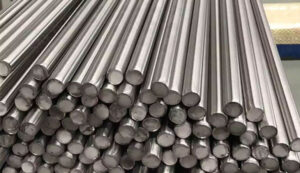316 stainless steel round bars are renowned for their exceptional corrosion resistance, making them a popular choice in various industries. Proper maintenance and welding techniques are crucial to ensure the longevity and reliability of structures and components made from this versatile material. In this comprehensive guide, we will delve into the best practices for maintaining and welding 316 stainless steel round bars.
Understanding 316 Stainless Steel
Before we dive into maintenance and welding, let’s establish a solid understanding of 316 stainless steel and its unique properties.
Composition and Alloying Elements
316 stainless steel is classified as an austenitic stainless steel alloy, characterized by its well-balanced composition of key elements:
- Chromium (Cr): Provides resistance to corrosion by forming a protective oxide layer.
- Nickel (Ni): Enhances corrosion resistance, especially in acidic environments.
- Molybdenum (Mo): Improves resistance to pitting corrosion.
- Iron (Fe): The base metal that contributes to its strength and durability.
- Other Trace Elements: Including carbon, silicon, and manganese, influence specific properties.
Corrosion Resistance
The standout feature of 316 stainless steel is its exceptional corrosion resistance, which allows it to withstand harsh environments, including exposure to saltwater, acids, and chemicals.
High Temperature Performance
316 stainless steel retains its mechanical properties even at elevated temperatures, making it suitable for applications exposed to heat.
Strength and Durability
These round bars are known for their impressive tensile strength and durability, enabling them to withstand heavy loads and challenging conditions.
Proper Maintenance of 316 Stainless Steel Round Bars
1. Regular Cleaning
To maintain the appearance and corrosion resistance of 316 stainless steel, regular cleaning is essential. Use a mild detergent or stainless steel cleaner, a soft cloth, and warm water to remove dirt, grease, and contaminants. Avoid abrasive materials that can scratch the surface.
2. Passivation
Passivation is a chemical process that enhances the natural corrosion resistance of stainless steel. It involves the removal of free iron and other surface contaminants. Passivation is recommended after fabrication or welding to restore the protective oxide layer.
3. Avoiding Chloride Contamination
Chlorides, often found in saltwater and certain cleaning products, can lead to corrosion in stainless steel. Avoid exposing 316 stainless steel to high concentrations of chlorides, and promptly rinse off any chloride-containing substances.
4. Inspection and Maintenance Schedule
Create a routine inspection and maintenance schedule to check for signs of corrosion, surface damage, or wear. Address any issues promptly to prevent further deterioration.
Proper Welding of 316 Stainless Steel Round Bars
Welding 316 stainless steel requires specific techniques and considerations to maintain its corrosion resistance and mechanical properties.
1. Selecting the Right Filler Material
Choose a low-carbon or “L” grade filler material (e.g., 316L) to minimize the risk of sensitization, a form of corrosion that can occur in the heat-affected zone of welded stainless steel.
2. Proper Welding Equipment
Use dedicated equipment for welding stainless steel to avoid cross-contamination with other materials. Ensure that welding machines, torches, and electrodes are clean and in good working condition.
3. Controlled Heat Input
Control the heat input during welding to prevent overheating, which can lead to sensitization and reduced corrosion resistance. Use lower heat settings and a slow welding speed.
4. Back Purging
In critical applications, consider using back purging with an inert gas, such as argon, to protect the backside of the weld from oxidation and ensure a clean, corrosion-resistant weld.
FAQ
Q1: Is 316 stainless steel weldable?
Yes, 316 stainless steel is weldable using standard welding techniques. However, proper welding practices, such as using low-carbon filler material and controlling heat input, are essential to maintain its corrosion resistance.
Q2: What is sensitization in stainless steel welding?
Sensitization is the formation of chromium carbides at grain boundaries during welding, reducing the corrosion resistance of stainless steel. It can be minimized by using low-carbon filler materials and controlled heat input.
Q3: Can 316 stainless steel be used in high-temperature applications?
Yes, 316 stainless steel can withstand high temperatures and is suitable for applications involving heat. Its mechanical properties are retained at elevated temperatures, making it a reliable choice.
Q4: How often should I passivate 316 stainless steel?
Passivation should be performed after fabrication or welding to restore the protective oxide layer. The frequency of passivation depends on the specific application and exposure to corrosive environments. Routine inspection can help determine when passivation is needed.
In conclusion, maintaining and welding 316 stainless steel round bars require careful attention to detail and adherence to best practices. Proper maintenance ensures the material’s longevity and corrosion resistance, while skillful welding techniques preserve its mechanical properties. By following these guidelines, you can maximize the performance and reliability of 316 stainless steel in a wide range of applications.


